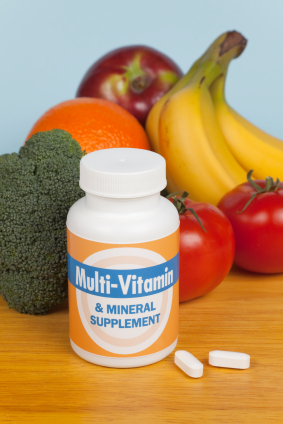Copper Information
The Benefits of Copper
By: Dr. George Obikoya
Copper is essential for life, which means that the human body must have copper to stay healthy. This mineral helps transport oxygen through your body, maintain hair color, and is used to make hormones. In fact, for a variety of biochemical processes in the body to operate normally, copper must be a part of our diet. To be healthy you need a diet adequate in protein, carbohydrates, fats, vitamins, and minerals. Essential trace minerals, including copper, are needed only in very small amounts, which is why they are called 'micronutrients'. They are, nonetheless important, if not vital to good health.
Copper is necessary for the growth, development, and maintenance of bone, connective tissue, brain, heart, and many other body organs. It is involved in the formation of red blood cells, the absorption and utilization of iron, and the synthesis and release of life-sustaining proteins and enzymes. These enzymes in turn produce cellular energy and regulate nerve transmission, blood clotting, and oxygen transport. Copper stimulates the immune system to fight infections, repair injured tissues, and promote healing. Copper also helps to neutralize "free-radicals" which can cause severe damage to cells.
Copper is also needed for certain critical enzymes to function in the body. These enzymes are involved with energy metabolism, the way that the body gives you the energy to function. Too little copper in the body can actually directly lead to disease. Furthermore, Copper is involved in the functioning of the nervous system, in maintaining the balance of other useful metals in the body such as zinc and molybdenum, and possibly other body functions. Copper is a natural ingredient in many foods. It is typically present in mineral rich foods like vegetables (potatoes), legumes (beans and peas), nuts (peanuts and pecans), grains (wheat and rye), fruits (peach and raisin), and, yes, even chocolate!
If you're supplementing with zinc, it's especially important to take copper; zinc interferes with your body's ability to absorb copper. You need just a bit of copper, 1 to 2 mg daily, the amount in most multivitamins. People with poor diets, often including the elderly who may not able to care for themselves and people in places where it is difficult to get proper nutrition, may not take in enough copper to meet the body's needs. In addition, a small number of people in rare cases have genetic sensitivities that make it difficult for them to either absorb copper when the body needs it (Menke's Disease), or get rid of it when the body does not need it (Wilson's Disease).
We now can define the genetic bases of these diseases. And, contrary to common myth, the fetus, infants, and children are not particularly susceptible to copper toxicity. In fact, the fetus, late in development, actually stores copper in preparation for nutritional needs after birth. Recent research has revealed that the very young have special biochemical mechanisms for adequately managing copper in the body while their permanent life-long mechanisms develop and mature.
Some believe that they should wear copper bracelets to cure arthritis. It is possible that bits of Copper are absorbed through the skin to and have antioxidant effects on the condition but the research evidence for this is inconclusive. Copper is an essential nutrient required by the body in daily dietary amounts of 1 to 2 milligrams for adults (1/2 to 1 milligram for children). This can be obtained by eating normal amounts of the copper-rich foods indicated earlier.
Copper supplements are generally not recommended for healthy adults who consume a well-balanced diet and eat a wide range of foods. However, copper supplementation is necessary for premature or low birth weight infants, infants being fed unfortified formula or cow's milk during the first year of life, and malnourished young children. Most good mulvitivamins will provide you with the proper levels of Copper, so additional supplementation is not required.
Copper supplementation should also be considered for individuals who have illnesses that reduce digestion (a danger for children with frequent episodes of diarrhea or infections and for alcoholics), are unable to eat sufficient quantities of food (a problem for many elderly people, persons with eating disorders, on diets, or who are chronically ill), take medications which block the body's use of copper, are being treated for anemia with iron supplementation, are recovering from other serious illness or injury, or are at risk for osteoporosis.
Supplementation should always be administered under a doctor's supervision and caution should be exercised not to exceed the recommended doses. If supplements are to be taken, the doctor and consumer alike should become aware that different forms of copper have different absorption rates in the body. For example, cupric oxide is the most common and least expensive form of copper, but also has the least absorption rate. Copper gluconate, sulfate, and carbonate have much higher absorption rates than cupric oxide, but are (of course) slightly more expensive.
For the general population, copper is not toxic during the normal course of daily life. However, certain individual with rare genetic disease (i.e., Wilson's Disease) need to be vigilant about monitoring the levels of copper in their bodies and managing it in consultation with their physician or health professional.
A good multivitamin is the foundation of health
and nutrition. Take a look at our scientific reviews of many of
the popular brands for factors such as ingredients, areas of improvement,
quality level, and overall value. If you are looking for a high
quality liquid multivitamin, we suggest that you take a look at
the Multivitamin
Product Comparisons.
References
Biochemistry; Mary K. Campbell, 1991
Dietary Reference Intake for Vitamin A, Vitamin K, Arsenic, Boron,
Chromium, Copper, Iodine, Iron,
Manganese, Molybdenum, Nickel, Silicon, Vanadium and Zinc, National
Academy of Science/Institute of Medicine, 2000
Modern Nutrition in Health and Disease; Maurice E. Shils, M.D.,
Sc.D. et al, Williams & Wilkins, 9th edition, 1999.
Understanding Nutrition; 5th Edition, Whitney, Hamilton, Rolfes,
1990

